I'm trying to write simple function in Matlab to calculate and plot Noise Power Spectrum (NPS). First off I wanted to test if the algorithm I got from my teacher was fine and all. Here it is (it was made in mathcad)

So i tried to pretty much copy-paste it into Matlab script and ended up with this code:
clear all;
clc;
N=1000;
O=1024;
mn=zeros(N,O);
n0=1500;
s=sqrt(n0);
W=zeros(N,O/2);
W1=zeros(N,O);
for k=1:N
for l=1:O
mn(k,l)=n0+round(sin(randn)*s);
end
end
for k=1:N
for l=1:O
mn(k,l)=mn(k,l)-n0;
end
end
for k=1:N
W1(k,:)=fft(mn(k,:));
end
for k=1:N
for l=1:O/2
W(k,l)=W1(k,l);
end
end
NPS1=(abs(W)).^2;
NPS2=sum(NPS1);
NPS=(1/N)*NPS2;
plot(NPS);
I'm not using the Poisson distribution and I've switched row-columnd indexes but that shouldn't matter (right?). The problem is values in my plot are pretty much 400 times greater than what was expected.
Here is what it should look like:

I was trying to find what did I do wrong but after a quite some time of testing some changes I'm back in square one... The only thing that's worrying me is that maybe Matlab fft function works kinda differently than the one used in Mathcad (can't really tell I understand it completly). Any kind soul can tell me if it's about the fft function? Or am I just blind dummy who can't see a silly mistake he made? Cheers and sorry for my bad English.
[EDIT]
After some time passed my teacher asked me to check if this method works with correlated (kinda) noise as it works in ( again) mathcad. After correlation its NPS should be 'falling' at higher frequences. The problem is it does not. The code I'm using to test this looks like this:
clear all;
clc;
N=1000;
mn = poissrnd(N, N, N);
dataw=zeros(N);
for k=1:N ## loop used for my teacher's correlation method
for l=1:N
if l>1 && l<N
dataw(k,l)=dataw(k,l)+mn(k,l)*0.5+mn(k,l-1)*0.25+mn(k,l+1)*0.25;
elseif l==1
dataw(k,l)=dataw(k,l)+mn(k,l)*0.75+mn(k,l+1)*0.25;
else
dataw(k,l)=dataw(k,l)+mn(k,l)*0.75+mn(k,l-1)*0.25;
end
end
end
dataw = dataw - mean(dataw(:));
W1 = (1/sqrt(N))*fft(dataw, [], 1);
NPS1=(abs(W1)).^2;
NPS2=sum(NPS1);
NPS=(1/N)*NPS2;
plot(NPS);
The only changes I've made to the code fixed by rayryeng is making the noise matrix square (1000x1000), making mean value 1000 as well and using whole transformed vector W1 instead of its 'half'. I know it did work for my teacher but It does not for me... Is there something else about matlab fft I've overlooked or is it the 'correlation method' I've used?
Adding how it looks like in Mathcad after few quick changes (a few minor differences but overall it shows the effect I'm supposed to get). It cut off the beggining of scan but it's exactly the same 1 I've put at the start of this post.
[EDIT2]
Nvm, it was just a dimension problem in fft function. After changing it into fft(dataw, [], 2) it looks better.



